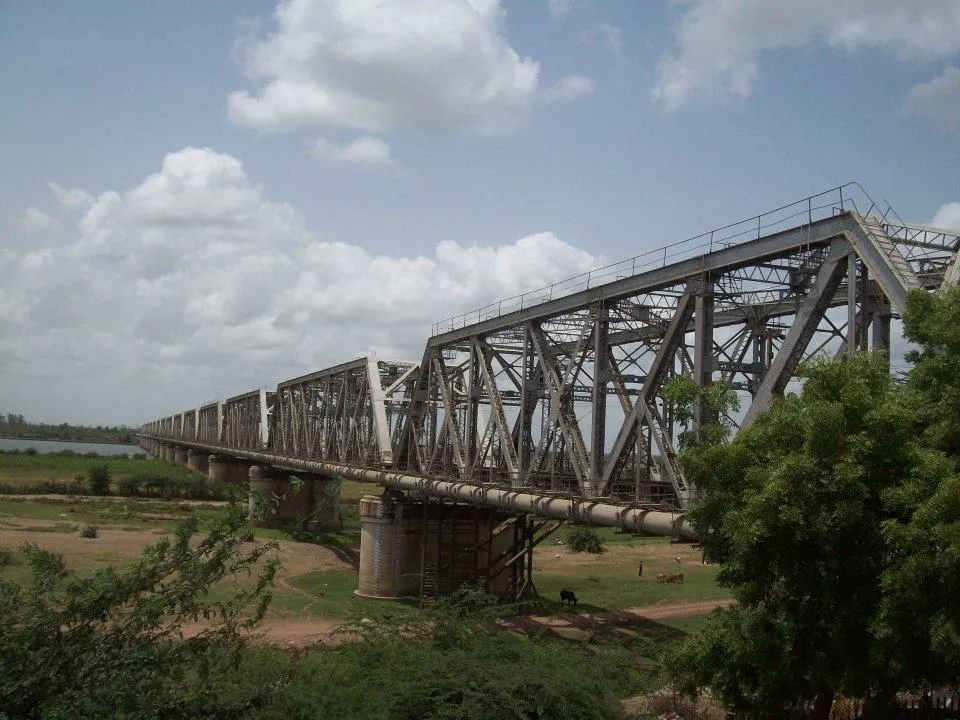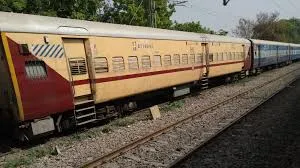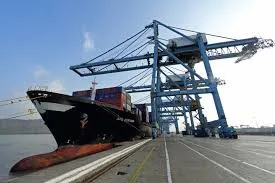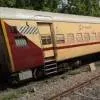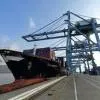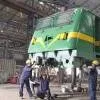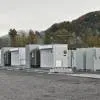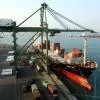Road construction equipment vendors have pinned their hopes on a revival after the elections while productivity has become the top priority of buyers.
Research firm Knowledgefaber estimates the current market size of the Indian construction equipment sector to be $4.8 billion and expects it to grow to $17.5 billion by 2020 at a CAGR of 17.6 per cent. Indeed, strong fundamentals create a positive long-term view for road construction equipment.
According to Sushil Rajpurohit, Partner, Knowledgefaber, ¨Growth drivers in recent years have been increasing labour shortages, strict project deadlines, the award of BOT projects and the growing numbers of value-focused customers with an eye on productivity. This trend is likely to continue in the near future as superior project execution capabilities will be needed to meet ambitious road construction targets that will, in turn, fuel demand for sophisticated road construction equipment.¨
Poor showing
In the recent past, the road construction equipment segment has drawn a blank. ¨Construction equipment for infrastructure and roads has seen de-growth,¨ says Amit Gossain, Executive Vice President, Marketing, Business Development and Corporate Affairs, JCB India Ltd and President, Indian Construction Equipment Manufacturers Association. ¨Compaction equipment, though, has seen little growth. But in a country like ours where most roads are yet to be built, this is negligible.¨
¨The first five months of this year has been slow with 30 per cent fall in volume of backhoe loaders compared to the same period last year,¨ says Abhijit Gupta, Managing Director, Case India.
¨Demand has been more or less flat with decline in the pavers segment,¨ says Ramesh Palagiri, Managing Director & CEO, Wirtgen India Pvt Ltd. ¨The National Highways (NH) sector has come to a standstill as most BOT projects are delayed, stalled or dropped, and very few EPC projects have been awarded. A revival of the NH sector would kick start demand.¨

Demand upturn
Notwithstanding the slowdown, business sentiment for the near future is positive. Palagiri is expecting a revival in the last quarter of 2014, especially with activity in state highway projects in Rajasthan, Bihar, Madhya Pradesh and Chhattisgarh. ¨After the elections and a lot of projects with some quick action by the new government, we could expect demand to improve in the last quarter of 2014 or first quarter of 2015,¨ opines Gupta.
¨The ground-level forecast by our sales team suggests that the demand curve has bottomed out, and we can expect an uptrend,¨ says Rajesh Shrivastava, General Manager, Marketing, Terex India. He is optimistic about state and central projects pulling up demand provided land can be acquired for such projects. ¨We will watch how things unfold over the next six to nine months,¨ he adds. ¨In the eventuality of a weak monsoon, quick government action to launch counter measures would pull up activity in the short run. But the consequential fall in rural incomes could be a cause of worry.¨
¨With the latest government initiatives and announcements on the road sector, sentiments are positive and 2014 may be favourable, depending on how fast the implementation can happen,¨ says Gossain. ¨We do hope to see positive movement in the industry in the second half.¨ According to him, promising projects are in NHAI´s current pipeline including 2,000 km of cash contract road projects and 3,000 km to be bid via the PPP mode. ¨Apart from national roads, road development in the rural sector will continue to be a significant driver in coming years,¨ he adds.
Focus on productivity
Certain earthmoving equipment play a huge role in road construction, especially loaders, excavators and bulldozers. Moreover, the needs of users are complex. According to Shrivastava, ¨Research shows that Indian backhoe loader users are deeply segmented. Hirers are highly focused on fuel economy whereas contractors want higher productivity. Many of our customers are first-time buyers as well as owner-operators û they demand good fuel economy and higher operating comfort.¨ Recent design changes made on Terex´s TLB 740 and 844 model backhoe loaders address these complex demands. New models of backhoe loaders offer 18 per cent higher torque on the backhoe end, allowing operators up to 5-7 per cent higher productivity. In monetary terms, the improved ratio of earthwork (m3) per litre of fuel gives customers a saving of Rs 26/hr or up to Rs 18,500 over 700 hours of operations. Also, all of Terex´s models claim the USP of low maintenance costs vis-a-vis competitor´s models in the same category. Shrivastava explains the cost saving, saying, ¨Over a period of two to three years, all major sub-assemblies of our backhoe machines (axle, transmission, etc) do not come in for any major overhaul whereas almost each component of the power train and the engine of our competitor´s models require either an overhaul or complete replacement in the same time. Engine overhauls and spare parts are expensive.¨
Case has recently launched the new EX-series in 76/86/96 HP backhoe loaders with the powerful FPT engine to meet customer needs for high productivity and lower fuel consumption coupled with low maintenance cost and operator comfort. EX series models offer approximately 36 per cent more cabin space and improved component ergonomics, making them more accessible and the machine easily serviceable.
Wirtgen has introduced latest innovations in the cold milling and cold road rehabilitation and recycling segments, which have been well accepted. ¨Cold milling is no longer considered new technology,¨ says Palagiri. ¨In time, cold recycling will become as established.¨ Wirtgen has also introduced the DASH 3 generation of asphalt pavers that boasts of new productivity features to keep operating costs low. Even though the brand was a late entrant in the compaction segment, it has introduced two world-class products and is on course to achieve its targeted 20 per cent market share. Wirtgen´s line of Hamm compactors feature India-only characteristics, such as conforming to the Indian Homologation Standard and a specially developed sunshade canopy.
In the recent past, Volvo has replaced its A and B series of excavators with the more fuel-efficient D series, which also offers better hydraulics and electronics. ¨Our excavators consume 5 per cent less fuel and are 7.5 per cent more productive,¨ says AM Muralidharan, President, Volvo Construction Equipment, India. Companies conscious about productivity are also seeing value in using the Volvo asphalt compactor, a heavier machine that assures high quality outcomes in fewer passes. ¨It uses intelligent compaction system technology to avoid unnecessary passes,¨ he says. Clearly, vendors are doing all they can to help operators achieve higher productivity.
Projected growth of road construction equipment
Construction equipment: The lion´s share of project costs?
The kind, type and range of equipment required for different road construction projects vary a great deal. Therefore, a ball-park percentage number may be difficult to determine. According to Rajesh Shrivastava, General Manger, Marketing, Terex India, ¨A road project under the Prime Minister´s Grameen Sadak Yojna schemes would typically require equipment up to 50 per cent of project cost, while this proportion would be much lower for large-scale highway development projects.¨ ¨Roughly 30-35 per cent of the total highway project cost is spent on construction equipment,¨ estimates Chittaranjan R Das, General Manager (Corporate Affairs), JM Mhatre Infra Pvt Ltd.
Towards greater productivity
What actually helps work move faster and more efficiently on the ground? According to Chittaranjan R Das, General Manager (Corporate Affairs), JM Mhatre Infra Pvt Ltd ¨Productivity in construction activities is an outcome of intense planning, mechanisation, operator performance, robustness of equipment and the accurate aligning of inputs.¨
JM Mhatre Infra is using four Wirtgen pavers, three owned and one on hire, and a Wirtgen curing machine for the construction of the Sion-Panvel Highway (near Mumbai). Das believes one of the biggest benefits of this paver is its ability to process the input parameters prior to actualising the output. For instance, its in-built sensors can determine if the chosen paving width is actually feasible, and suggest a correction if it senses any obstruction. Working intelligently is a major productivity booster. Additionally, the machine is compact, versatile and easy to operate. Its dowel bar insertion facility is accurate and flexible enough to adjust to the requirement of different sites.
Cost savings also come from continuous operations and this, in turn, mandates entering into an annual maintenance contract for strong supplier support and to minimise breakdowns. ¨We utilised the machines almost 24/7 over two months.¨ Das reckons the choice of paver helped save 12-15 per cent of costs.
¨Productivity in road construction equipment depends on the timely supply of sufficient quantity of quality aggregates that, in turn, depends on selecting good stone quarries equipped with crushing plants of the right capacity and sufficient dumpers for transportation,¨ says Samar Ghoshdastidar, Technical Director, Simplex Infrastructures Ltd. ¨As important is the timely supply of bituminous product, and the production and storage facilities at site and laying of the bituminous mix.¨
Within sensor pavers, Ghoshdastidar recommends using those with a very high degree of sensitivity for optimum results. ¨Pavers with electric heating system are safer and preferred for better control of temperature, even heating all through, and for avoiding logistical problems at remote locations from having to arrange for cylinder gas on time for smooth progress of work,¨ he says. ¨Other features to look out for are paving and travelling speed because these affect execution speed. Ideally, the paving speed should be infinitely variable. Electronic controls can help maintain a constant or desired speed during paving, depending on the job requirement. Pavers should also be easy to maneuver, provide sufficient visibility to operators and be easy to use and maintain. Features to look out for in compactors are engine power, drive, grade ability, compaction energy, etc.¨
Increase the productivity of road construction equipment
A study by Dr Debasis Sarkar, Associate Professor & Head, Department of Civil Engineering, School of Technology, Pandit Deendayal Petroleum University, presents ways to optimise the productivity of hydraulic excavators and vibratory tandem steel drum rollers in highway projects. Its results can be extended to other highway construction equipment as well.
According to Dr Sarkar, Peurifoy and Schexnayder (2008) postulate this formula to calculate the productivity of a hydraulic excavator in cubic metre (cu m) per hour, where the heaped capacity is expressed in cubic yard and the time cycle is expressed in second:
According to the actual data collected from a highway project site, Dr Sarkar has observed that the ´ideal´ computed productivity is not achieved on site, possibly because actual circumstances and inputs for the process are less than ideal. For instance, the operator might not be as skilled as required, or the class of earth may not be suitable for achieving higher excavation productivity, or the weather conditions may be adverse and not suitable for good working conditions. ¨For hydraulic excavators, I have observed a difference of 7.9 per cent between actual productivity on site and the productivity as computed through the productivity equation,¨ he says. Dr Sarkar advocates the use of Excel-based Evolver software to optimise the productivity of the excavator based on the available resources. Essentially, the software is fed with values of parameters affecting productivity, such as the heaped bucket capacity, maximum digging depth, swing angle, average depth of cut, etc. The software then uses the principles of genetic algorithm and through crossovers produces conditions that can give optimised productivity, which is more than the actual site productivity. Through this, Dr Sarkar has actually observed site operators achieve productivity that is 7.8 per cent higher than computed productivity. Applying the same methodology to the use of vibratory steel drum rollers, operators have achieved 15.69 per cent higher productivity than the value computed through the productivity equation:

